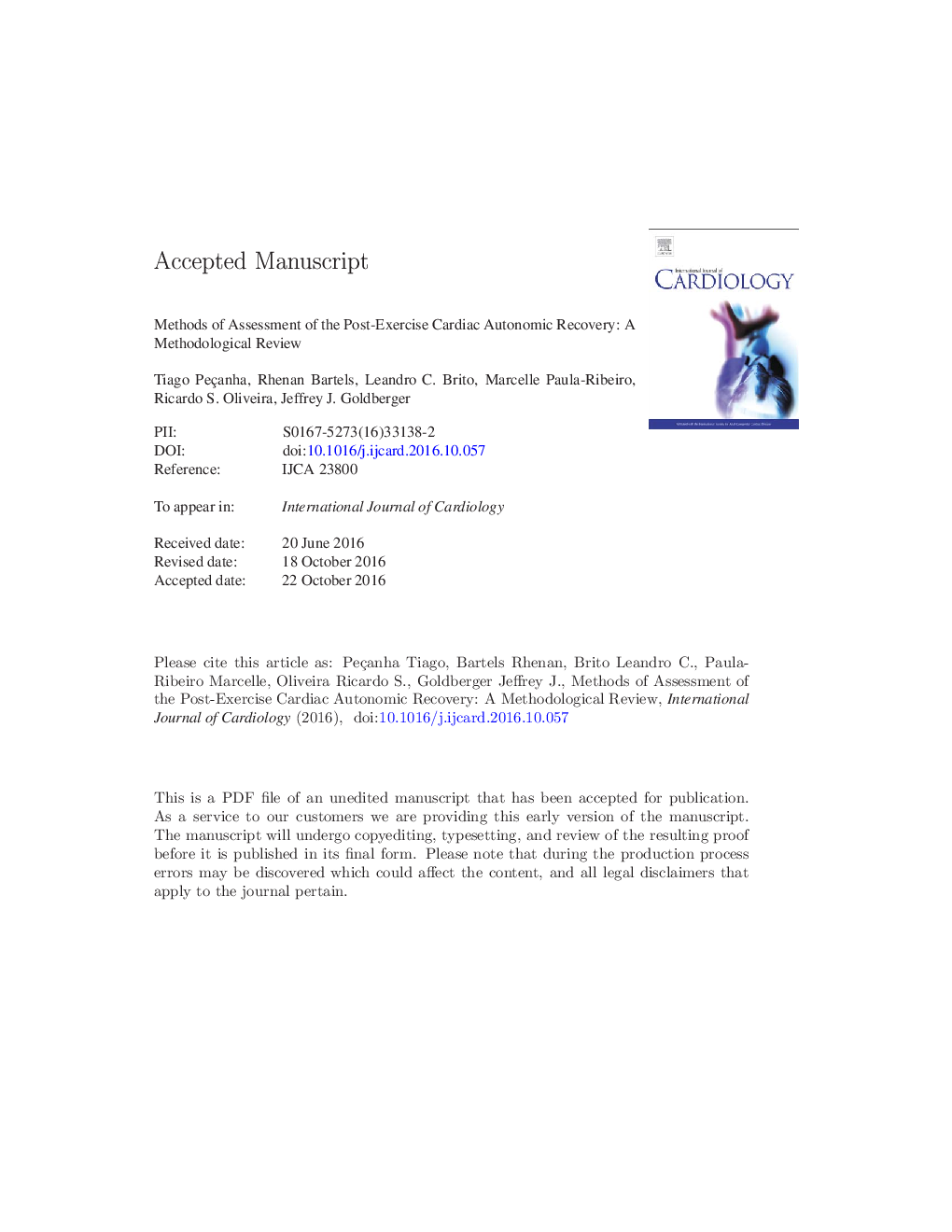| Article ID | Journal | Published Year | Pages | File Type |
|---|---|---|---|---|
| 5605652 | International Journal of Cardiology | 2017 | 27 Pages |
Abstract
The analysis of post-exercise cardiac autonomic recovery is a practical clinical tool for the assessment of cardiovascular health. A reduced heart rate recovery - an indicator of autonomic dysfunction - has been found in a broad range of cardiovascular diseases and has been associated with increased risks of both cardiac and all-cause mortality. For this reason, over the last several years, non-invasive methods for the assessment of cardiac autonomic recovery after exercise - either based on heart rate recovery or heart rate variability indices - have been proposed. However, for the proper implementation of such methods in daily clinical practice, the discussion of their clinical validity, physiologic meaning, mathematical formulation and reproducibility should be better addressed. Therefore, the aim of this methodological review is to present some of the most employed methods of post-exercise cardiac autonomic recovery in the literature and comprehensively discuss their strengths and weaknesses.
Keywords
Related Topics
Health Sciences
Medicine and Dentistry
Cardiology and Cardiovascular Medicine
Authors
Tiago Peçanha, Rhenan Bartels, Leandro C. Brito, Marcelle Paula-Ribeiro, Ricardo S. Oliveira, Jeffrey J. Goldberger,
